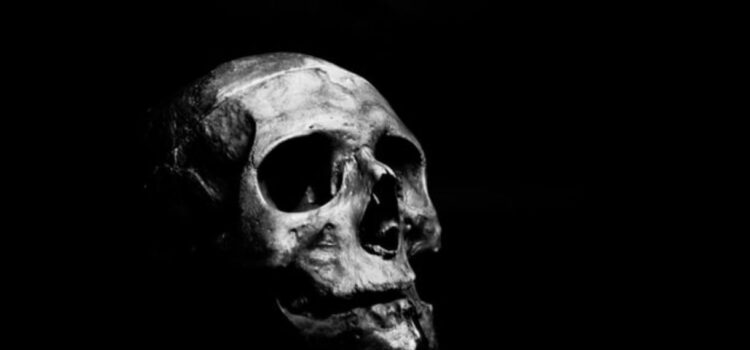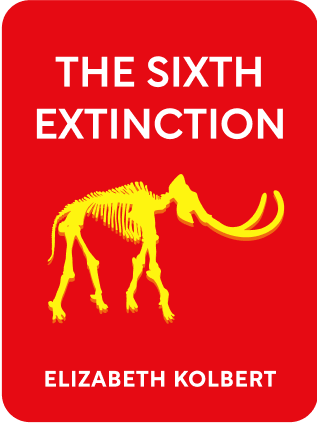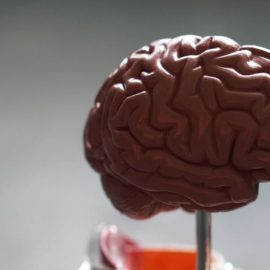

This article is an excerpt from the Shortform book guide to "The Sixth Extinction" by Elizabeth Kolbert. Shortform has the world's best summaries and analyses of books you should be reading.
Like this article? Sign up for a free trial here .
What caused neanderthal extinction? Did we—homo-sapiens humans—play a part in killing our species-cousins?
According to scientists’ projections, neanderthals disappeared about thirty thousand years ago. Researchers first suggested climate change or disease as theories for their disappearance. More recently, however, other researchers concluded that neanderthal extinction was caused by humans.
Read about neanderthal extinction and its causes.
What Caused Neanderthal Extinction?
We share DNA with an archaic human, the Neanderthal, who didn’t survive contact with us. The first bones of these distant relatives were found in 1856 in the Neander Valley in Germany is north of Cologne. The valley was lined with limestone cliffs, which were being quarried when workers discovered the bones in a cave.
They tossed the bones aside and they might have been lost, if the quarry’s owner hadn’t heard about them. Believing they were from a cave bear, the owner passed them on to a fossilist, who recognized them as resembling human bones and called them “a primitive member of our race.”
This was around the time Darwin’s On the Origin of Species had been published. Opponents of evolution dismissed the claims that the bones were a species of human. But over the next few decades, more bones of the same type turned up.
In 1908, a nearly complete skeleton was discovered in France. The Neanderthals (named after the valley where they were first discovered) were deemed to be more like apes than humans, although there’s no evidence they were hairy, as they were depicted in drawings at the time.
However, starting in the 1950s, scientists began piecing together a different, more human-like story. They concluded that Neanderthals walked upright with a human-like gait. A set of bones found in the 1960s in Iraq had a head injury, which had healed, suggesting the victim been cared for by others. Another skeleton had been buried with flowers, a researcher contended, although the seeds found with the bones could have carried there by rodents.
Neanderthals Meet Humans
Since the original discovery, Neanderthal bones have been found all over Europe, where it’s believed they lived for at least a hundred thousand years. To survive in the ice age, they probably created shelters in caves, used fire, and made clothing. Tools were found with their bones, including axes and scrapers probably used to cut meat.
Then, about thirty thousand years ago, Neanderthals disappeared. Scientists first suggested climate change or disease as theories for Neanderthal extinction. In recent decades, however, other researchers have concluded that humans killed them off, as they did the megafauna.
Around forty thousand years ago, humans showed up in Europe. Archaeological evidence suggests that whenever they arrived in a region inhabited by Neanderthals, the latter disappeared.
Researchers in Germany sequenced the entire Neanderthal genome (complete set of DNA) so they could compare the Neanderthal and human genomes’ similarities and differences. It turned out that Europeans and Asians shared DNA with Neanderthals, while Africans didn’t.
In a paper published in Science in 2010, the genome researchers theorized that modern humans who migrated from Africa were the major cause of Neanderthal extinction. But before driving them to extinction, Africans interbred with them, which produced children, who then escaped to Europe, Asia, and the New World. Thirty thousand years later, all non-Africans have between 1% and 4% Neanderthal DNA. Africans whose ancestors didn’t migrate and didn’t interbreed don’t have Neanderthal DNA.
More Archaic Humans
Skeletons of two additional archaic humans were found in the early 2000s. A small hominid species called Homo floresiensis, popularly referred to as a hobbit, was found in 2004 on the island of Flores in Indonesia. Researchers dated a tooth, which indicated the species was about seventeen thousand years old, but they weren’t able to extract any DNA to determine any relationship to modern humans.
In 2005, forty thousand-year-old bones of yet another pre-modern group were found in a cave in Siberia. Scientists called the species Denisovans after the name of the cave where the bones were found. Scientists were able to extract DNA, which indicated modern humans must have bred with them—New Guineans have up to 6% Denisovan DNA.
There’s no evidence that humans killed off the hobbits and Denisovans, but the timing of their disappearance in the late Pleistocene along with other extinctions suggests humans were the cause. Like the megafauna, they had a low reproductive rate, so pressure on the population from humans could have resulted in extinction.
Neanderthal Extinction: Last of the Great Apes?
We’re putting our next-closest relatives, the great apes, under similar pressure today. Over fifty years, the wild population of chimpanzees has declined by half. Mountain gorillas are experiencing a similar decline.
Lowland gorillas have declined by 60% over the last twenty years under pressure from poaching, disease, loss of habitat, and wars. Sumatran orangutans are listed as “critically endangered,” or at high risk of extinction in the wild.
In effect, we’re pruning our own family tree. Not only are we responsible for Neanderthal extinction tens of thousands of years ago; today, we’re continuing the job with our cousins, the great apes. One day, the only remaining representative of the great apes may be us.
For more than a hundred thousand years, Neanderthals lived in Europe without any significant impact on the planet. Had humans not shown up, Neanderthal extinction might not have happened and they could have still existed to this day, along with the woolly rhinos and wild horses they drew on the walls of their caves.
We don’t know what small mutation from the Neanderthals gave humans the insatiable desire to explore, along with the capacity to change and destroy the environment. But it’s literally made a world of difference.

———End of Preview———
Like what you just read? Read the rest of the world's best book summary and analysis of Elizabeth Kolbert's "The Sixth Extinction" at Shortform .
Here's what you'll find in our full The Sixth Extinction summary :
- How humans have set in motion a sixth mass extinction
- The 5 mass extinction events that occurred over the last 500 million years
- Why human ingenuity might be able to save the human species from extinction






